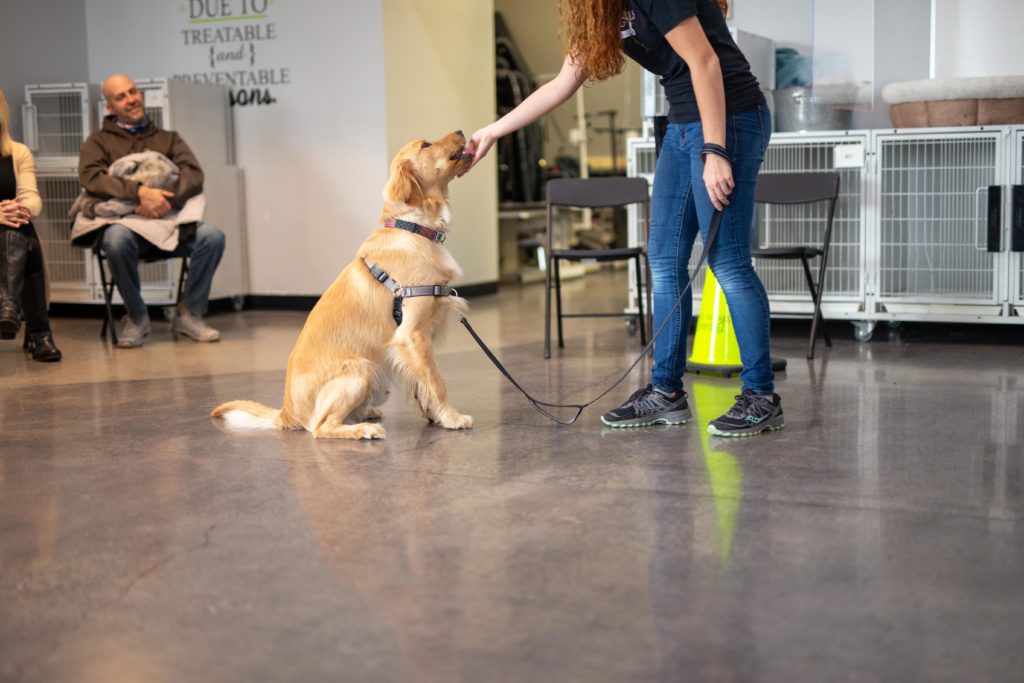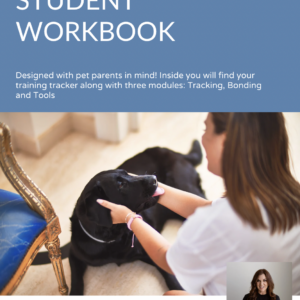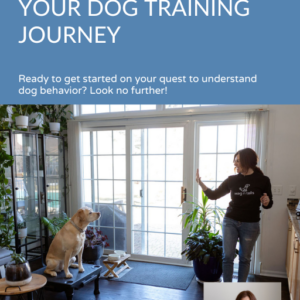What are the “Three D’s” of Dog Training and how can they help you?
In the dog training world, you’ll hear dog trainers often refer to dogs “generalizing” a behavior. Generalizing the behavior means quite simply, asking your dog to perform a behavior regardless of where they are, the level of distractions nearby or the environment they are in. For example, if your dog knows how to sit in the quiet kitchen in front of the cookie cupboard, that doesn’t mean the behavior will be “generalized” and your dog will know how to respond to the sit cue that’s given when someone rings the doorbell!
The Three D’s
Increasing your levels of criteria constantly once you have behavior on cue will help your dog generalize a behavior. Adding the Three D’s is how we accomplish this! The three D’s are distance, duration, and distraction, and they always affect your patience and your ability to be able to maintain your dog’s attention.
Remembering these tips will certainly help you think like a dog and help you keep your cool when communicating with your dog gets difficult.
Distance
Distance = How far away you are from your dog.
Ex: Place training when someone comes to the door.
Wouldn’t you lose your mind if someone put a spider in your hand as opposed to if it was across the room? I know I would! Actually, I kind of lose my cool even if it’s across the room, just sayin’. On the flip side, think of how teenagers act at a concert in the front row when the singers get close. They completely lose control with excitement and anticipation.
Distance can be tricky for most dogs too! Pay full attention to how far away you are from whatever it is that is distracting to your dog.
Here are a few examples of a stimuli that will affect your dog’s ability to generalize behavior:
- The presence of other dogs
- Movement through windows, door, barriers, fences, etc.
- Wildlife such as birds and squirrels (those pesky squirrels!)
- Other pets in the home
- Running children
- Moving cars, bikes, skateboards, etc.
- Things that make noise such as hairdryers, vacuum cleaners, etc.
- People (MY dog’s biggest weakness!)
- Fears or phobias
- Food
- Smells
- Toys
Something else to consider with distance training is how far away you are from your dog when you’re teaching stay cues. If you release the dog and then give food, you’ve just rewarded your dog for moving not staying.
Duration
Duration = How long we expect our dog to maintain a behavior.
Ex: Sit and stay while you’re cooking dinner with food on the countertops in the kitchen.
It can be difficult for most kids and many adults to keep still for long, imagine being a creature with so many keen senses in motion being asked to stay in one position when you’d rather run wild and free! This is a lot of us to ask from dogs. The key to your success is to very gradually increase the length of time expected when you’re teaching these behaviors.
Distraction
Distraction = Teaching your dog to maintain focus on you and feel calm and comfortable regardless of the distraction
Ex: Walking calmly on a leash even if there’s a dog across the street.
One day you’ll look forward to seeing another dog come by on a leash because you and your dog will be ready and you’ll both be able to handle it. You’ll be breezy! No big deal! You’ve got duration down pat and distance is easy. THAT’S when you’re ready to hit the streets for your distraction training!
Try not to get to fancy too soon. There’s never a rush in dog training and it’s always best to end your lessons on a positive note. If you end your walk or any learning experience with your dog making lots of mistakes, then you might be expecting too much.
Teaching in groups or practicing on lessons with your training coach at local parks and in your neighborhood is a great way to fine-tune your Three D’s.
Keep making learning fun and happy training!
About Wag n Tails Seminars
We offer seminars on a variety of topics from basic obedience to understanding how your dog learns and responds to cues. We also discuss how to properly use positive reinforcement in dog training and how to be consistent with rewards.
Our seminars are interactive and informative with plenty of hands-on activities. We discuss different dog behaviors and how to structure training around them. We also talk about how to deal with specific issues such as dog nutrition, your dog’s body language, enrichment, treat retreat, barking, aggression, and much more!
Learn more here.









